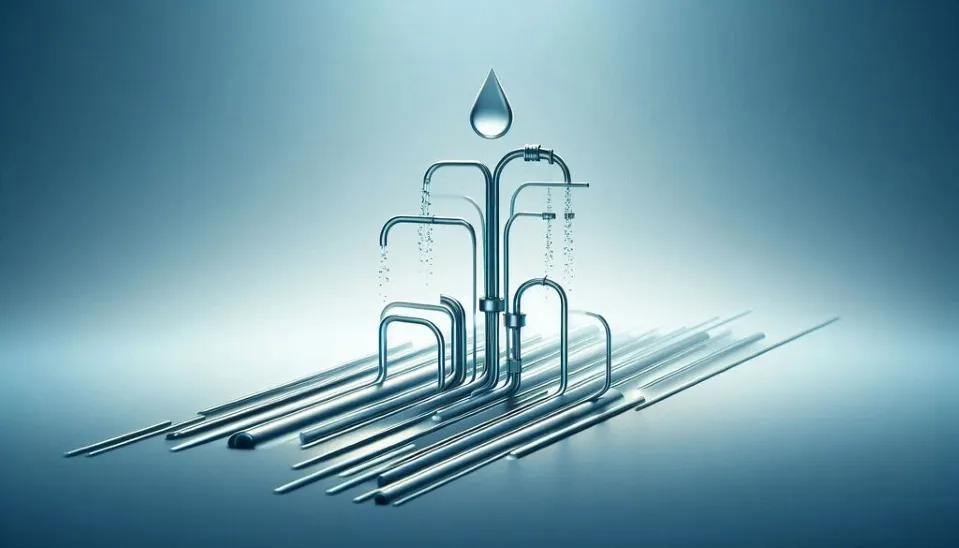
Did you know that more than 600 cubic kilometers of water are lost in the agricultural sector every year? To understand this volume of water, it is enough to know that Lake Erie in the United States and Canada has a volume of less than 500 cubic kilometers!
Globally, over 307 million hectares are equipped for irrigation, with 261 million hectares irrigated under full control systems. This extensive irrigation enables a higher cropping intensity and results in 346 million hectares of irrigated crops harvested annually. Meeting these demands requires 1500 cubic kilometers of irrigation water, which, through withdrawals, reaches 2673 cubic kilometers from various water resources, which creates a water requirement ratio of 56 percent (FAO). This ratio reflects substantial irrigation water management needs despite recent advances in irrigation efficiency. Another study shows that 1,257 cubic kilometers of irrigation water are consumed globally, from which 608 cubic kilometers are lost through non-beneficial processes like evaporation, interception, and conveyance (Jägermeyr et al., 2015). Water loss in irrigation systems, particularly in collective irrigation systems, includes several components such as evaporation losses, unauthorized use, metering errors, leakage, and discharges. Discharges in canal systems are a major contributor to non-revenue water, often making up nearly half of the total water loss, followed by canal leakage and metering inaccuracies (Cunha et al., 2019). Due to limited freshwater water resources, high water consumption, and losses in irrigation systems, this article covers and introduces solutions to minimize water loss in Irrigation Systems.
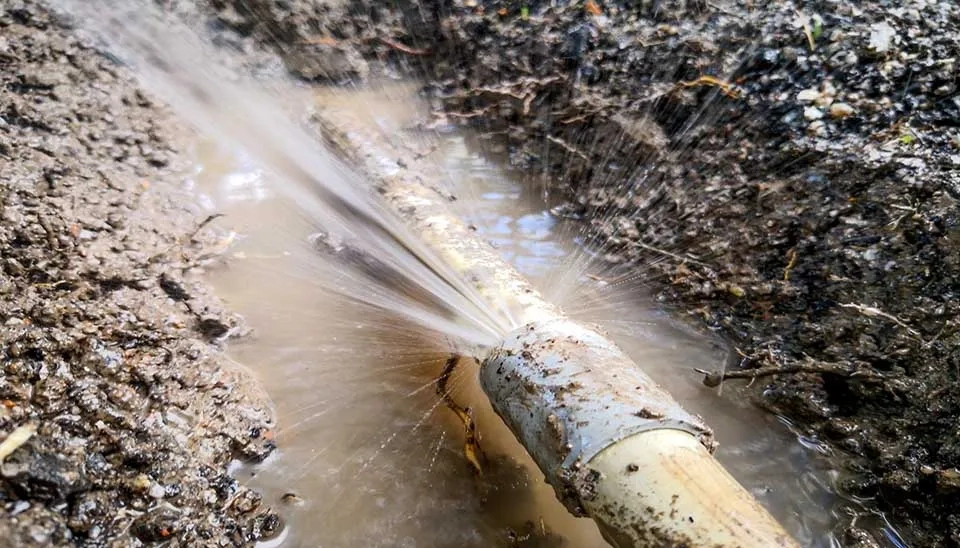
1. Internet of Things (IoT) in Water Loss Management
IoT-based irrigation systems are increasingly essential in managing water resources efficiently by tailoring water application to crop needs and minimizing losses. IoT technology can be used with machine learning algorithms for intelligent irrigation systems through real-time monitoring, automatic scheduling, and soil water content management, which helps reduce water and energy waste (Amassmir et al., 2021). IoT contributes to sustainable agriculture by optimizing water use in alignment with UN Sustainable Development Goals, particularly Goal 6. The IoT-enabled sensors aid in monitoring soil and environmental conditions, enhance irrigation efficiency, and reduce environmental impact. IoT helps farmers conserve water resources and improve crop yield by ensuring water delivery matches plant needs (Obaidee et al., 2022). Furthermore, multi-layer IoT tools encompass device, communication, service, and application layers, leading to sustainable irrigation and water loss management. Each layer supports specific functions such as sensor nodes that collect data on water quality, soil, and weather, communication blocks that handle data transfer and quality, and service blocks that facilitate IoT interoperability and user interaction. The application layer provides real-time insights and remote control, which allow users to adjust irrigation practices and reduce water loss while maintaining security (García et al., 2020).
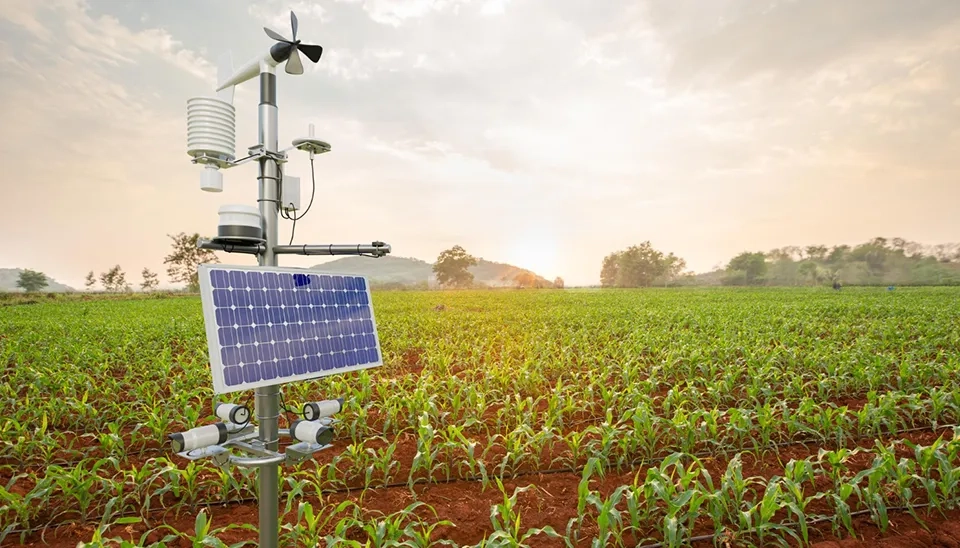
2. Irrigation Techniques to Reduce Water Loss
Replacing traditional surface irrigation with Sprinkler Irrigation System or Drip Irrigation System could reduce irrigation system losses by 54 percent and 76 percent, respectively, while maintaining crop yields. This shift could enhance crop water productivity by 9 to 15 percent globally and even higher in specific regions, like the Indus basin, where water savings are especially critical. Drip and sprinkler irrigation systems offer distinct features and approaches to improve water use and efficiency. Drip irrigation systems result in 9 percent less transpiration than sprinkler systems and apply water below the canopy without saturating the soil, often using a form of deficit irrigation aimed more at saving water than maximizing yields. Sprinklers, with a return flow of 34 percent of water withdrawn, experience more runoff than drip systems, which have a lower return flow of 13 percent. Both sprinkler and drip systems reduce conveyance losses due to pressurized delivery, but Drip Irrigation System is especially effective in minimizing evaporation and interception losses, making it more suitable and efficient for water conservation (Jägermeyr et al., 2015).
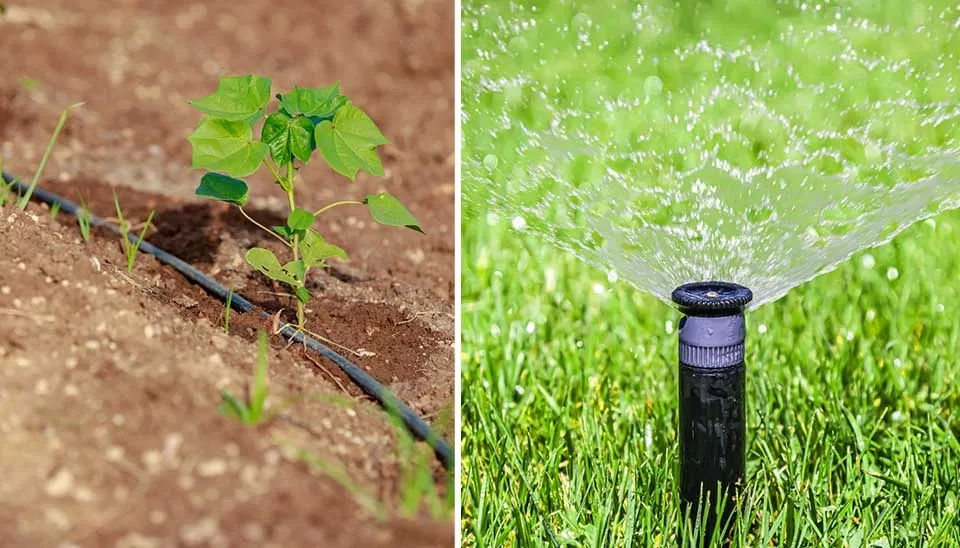
Sprinkler and drip irrigation systems reduce water stress on local resources by ensuring efficient, targeted water use, supporting both sustainable agriculture and water conservation. These pressurized irrigation systems apply water more precisely and frequently and keep soil moisture near optimal levels without over-saturating. Large companies have adopted these advanced systems, and smaller farmers could also be facilitated through new credit options and improved storage and market infrastructure by expanding access to these systems (Albaji et al., 2014). However, future research should prioritize understanding and enhancing the link between water consumption and crop yield to increase productivity, as well as cost analysis tailored to the specific conditions, ensuring the technology’s economic feasibility for adoption (Jesus et al., 2017).
The effectiveness and efficiency of drip and sprinkler irrigation systems depend largely on the proper functioning of the system. Blockages in the small emitters can quickly result in uneven water distribution, causing both water stress and waste. To maintain optimal water savings, farmers must take proactive measures to prevent and address clogs as part of their regular system maintenance.
3. Managing Irrigation Timing (Nighttime Irrigation)
By managing irrigation timing to align with lower wind speeds and using efficient irrigation machines, water loss from wind draft and evaporation can be minimized. In sprinkler irrigation systems, wind drift and evaporation can significantly reduce water efficiency, especially in windy areas, where wind increases water losses, and decreases irrigation uniformity. Water losses are typically about half as much as during nighttime compared to daytime, which makes nighttime irrigation more efficient. Additionally, pivot and ranger systems experience around one-third less water loss than solid set systems (Playán et al., 2005). As a matter of fact, switching from daytime irrigation to nighttime irrigation reduces wind drift and evaporation losses from 24% to 7% while improving irrigation uniformity from 50-71% to 64-80%. Night irrigation also decreases relative yield losses from 26-11% to 16-3% and enhances yield consistency and spatial variability of crop yield. However, adopting night irrigation will ultimately depend on local socioeconomic factors and water management limitations (Yacoubi et al., 2010).
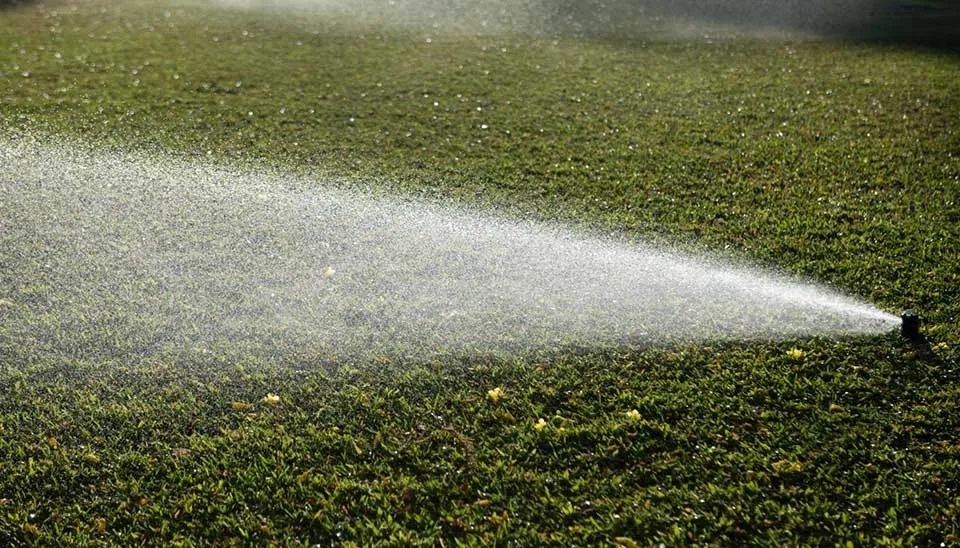
4. Smart Irrigation Systems
Smart Irrigation systems reveal technology and tools to optimize water consumption in agriculture, ensuring that crops receive the precise amount of water needed to thrive. For example, Smart Irri-Kit, a solar-powered irrigation control system can schedule irrigation based on real-time soil moisture readings. This system automates water delivery and tank management which enhance water conservation and crop health by preventing overwatering and maximizing root-zone water delivery. The Smart Irri-Kit provides a sustainable, cost-effective irrigation solution by reducing operational costs with solar power (Wanyama et al., 2023). Using Bluetooth-enabled solar-powered irrigation systems results in a 25.2 percent reduction in water usage and loss and 57.8 percent in energy costs. These systems are capable of manual and automated operations, addressing the potential of automated irrigation (Sinugo et al., 2021).
Smart automated irrigation systems can use soil moisture sensors connected to a microcontroller, which triggers water delivery only when soil moisture drops below a pre-set threshold. This system can be adapted for drip, sprinkler, and surface irrigation, and it minimizes the need for human intervention. By leveraging advancements in sensor technology, solar energy, and smart irrigation systems, these systems help reduce water and energy consumption (Barman et al., 2019).
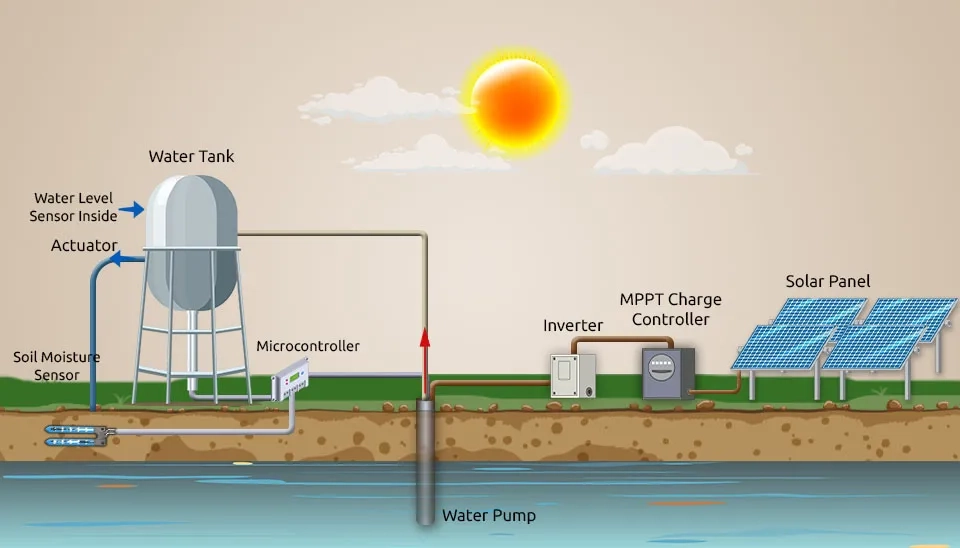
5. Minimize Water Losses in Irrigation Canals
Reducing water losses in irrigation canals is essential for conserving water resources and improving water delivery efficiency. Irrigation canals experience water losses primarily due to seepage, evaporation, and vegetation growth, with seepage being the most significant. Traditional methods focus on seepage control through measures like canal lining, which has advanced from basic materials to modern options like geomembranes and geotextile mats that also reduce evaporation and vegetation losses. Evaporation control methods include canal enclosures, floating covers, and solar photovoltaic panels. Vegatio is managed by manual removal, chemical treatments, and altering the canal environment. Despite recent innovations, the role of automatic control systems and IoT in water loss reduction remains underexplored (Samir et al., 2023).
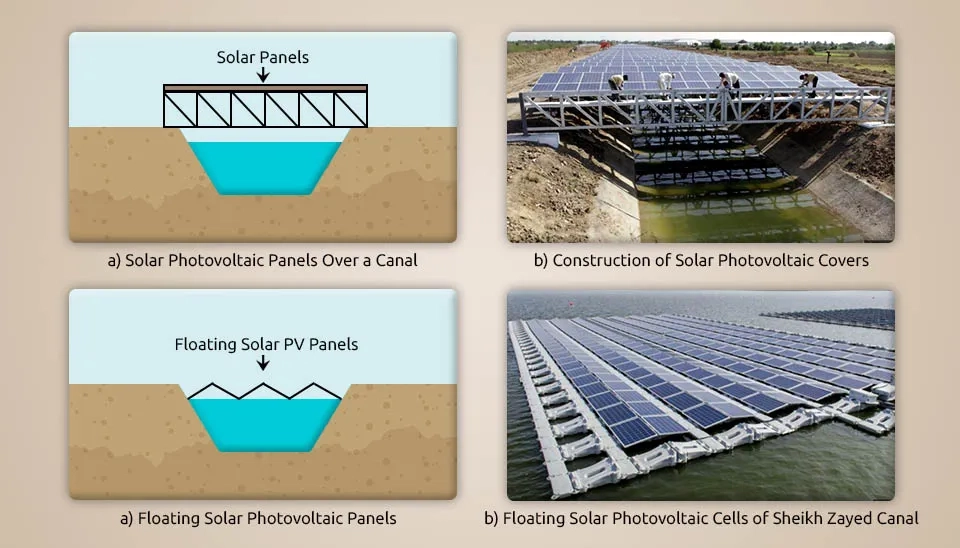
Another study shows that operational losses, rather than seepage, contribute most significantly to water loss. Seepage losses reach a maximum of only about 10 percent, while operational inefficiencies (caused by factors like non-automated water regulation and management practices accounted for up to 90 percent of total losses in ideal scenarios. These losses increased under fluctuating inflow scenarios, suggesting that poor flow management could increase water loss by up to 50 percent compared to optimal conditions. Hydraulic simulations showed that uniform lining as a structural solution minimizes seepage but operational improvements are paramount. Recommended methods include holistic and upgrading canal management approaches, incorporating both non-structural and structural solutions, such as automation and structural adjustments to reduce the impact of inflow fluctuation. However, future research should focus on the evaluation of different operational and control systems within a sustainable development framework, which considers technical, social, environmental, and economic factors (Barkhordari and Shahdany, 2022).
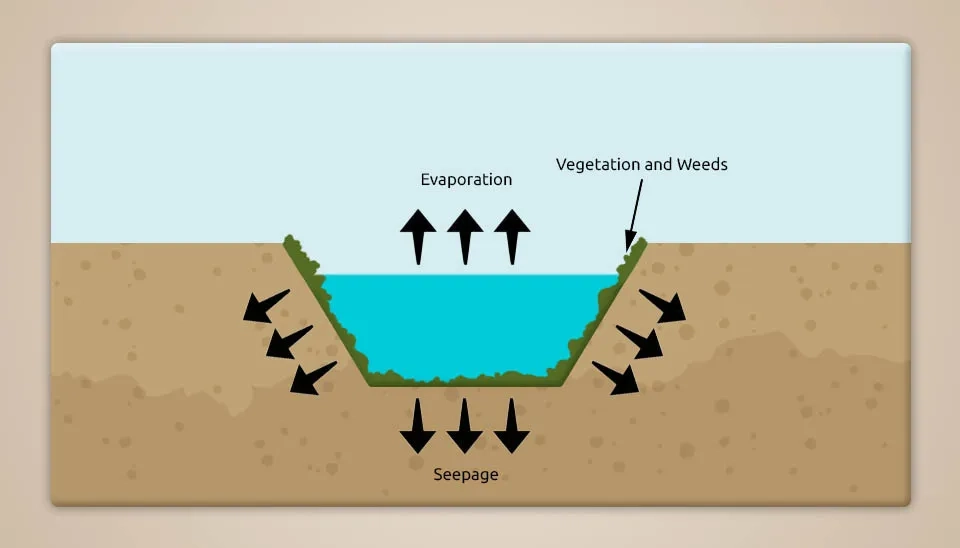
6. Agricultural Practices to Reduce Water Loss
Reducing water loss requires precise water management and the use of advanced irrigation techniques. With recent technological advancements, farmers can better assess crop water requirements and irrigation schedules, which improves efficiency and minimizes water loss (Ali et al., 2010). Another solution to prevent water loss in irrigation systems is deficit irrigation, which limits irrigation to drought-sensitive stages of crop growth and enhances water productivity without significantly reducing yields. Effective deficit irrigation requires understanding crop-specific drought responses, as water needs vary by genotype and growth phase. In this method, the minimum level of seasonal moisture is essential to be effective, which makes precise knowledge of crop drought tolerance vital for optimizing deficit irrigation strategies (Geerts and Raes, 2009). Furthermore, monitoring for crop compatibility and increasing irrigation uniformity through precise equipment selection, system design, and regular maintenance reduce water losses in irrigation systems. Adopting these strategies can shift the focus from land productivity to water productivity, which maximizes economic returns per unit of water in water-scarce areas (Pereira et al., 2002).
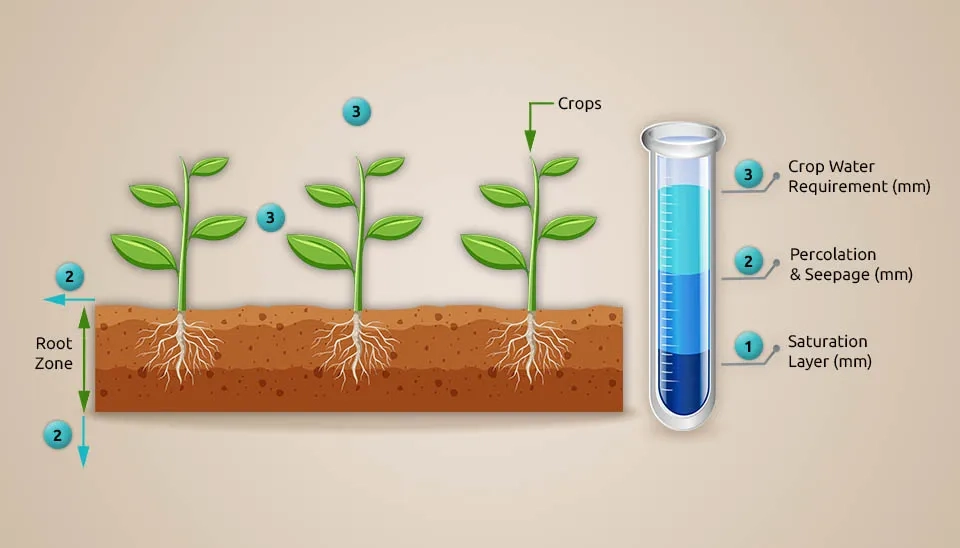
7. Conclusion
Minimizing water loss in irrigation systems is essential for sustainable agriculture and the conservation of increasingly scarce freshwater resources. Current irrigation practices account for significant water withdrawals, yet nearly half of the water is lost through non-beneficial processes like evaporation, leakage, and unauthorized usage. Advanced solutions, including the Internet of Things, sprinkler and drip irrigation systems, and smart irrigation technologies, offer promising methods to enhance water-use efficiency by ensuring precise water application. These innovations, alongside strategic irrigation timing and improved canal management, can significantly reduce water loss, enhance crop productivity, and lower operational costs. However, to make these systems economically feasible for wider adoption, research should focus on integrating these technologies into various socioeconomic contexts, along with comprehensive cost-benefit analyses. Ultimately, optimized water management practices in agriculture are vital to preserve water resources and promote environmental sustainability.
